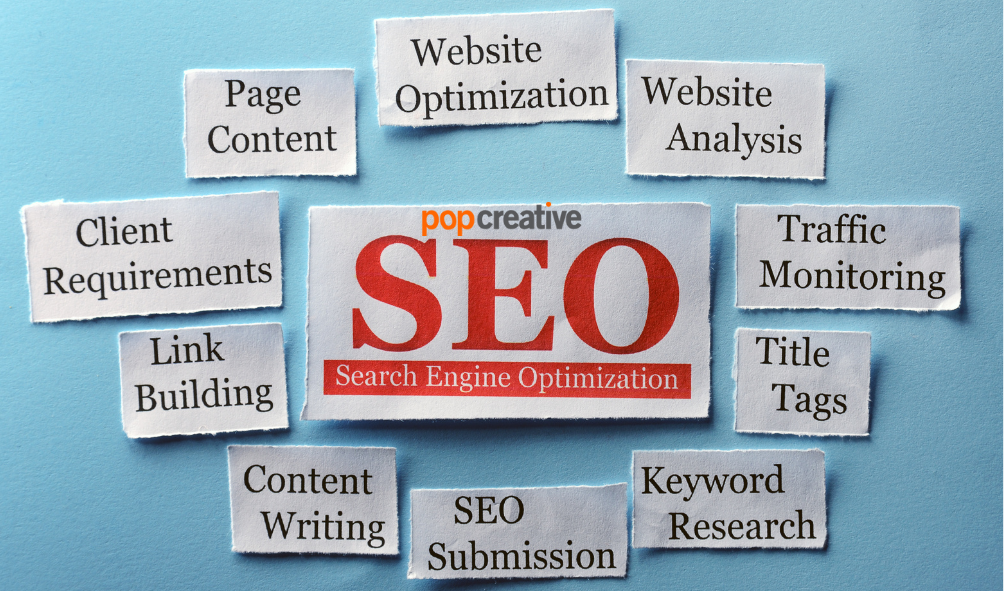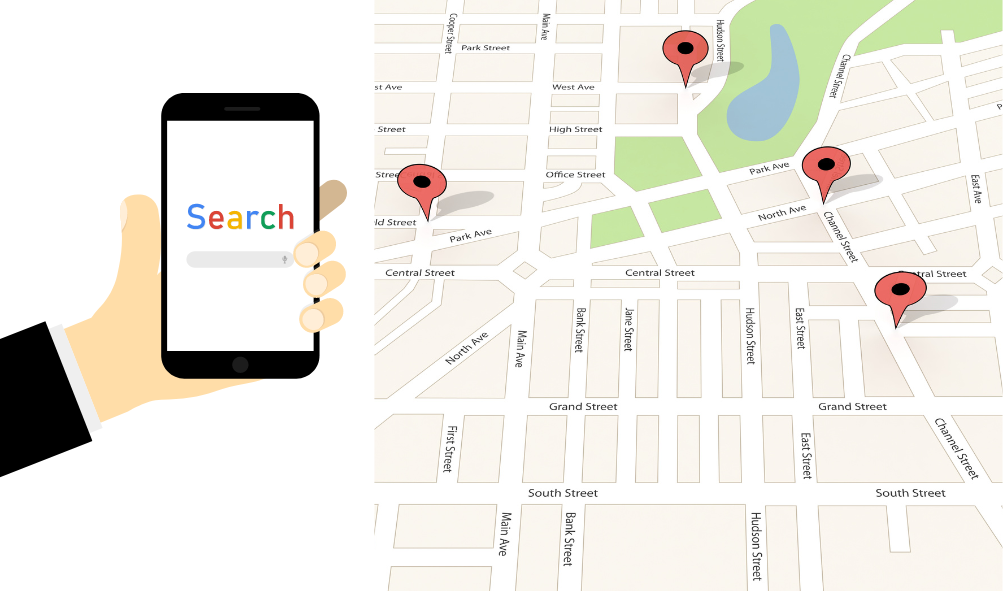It doesn’t matter where you are, what time zone you operate in, or where your customers are located. Accessing the global market ultimately comes down to being proactive and having an all-encompassing online marketing strategy.
While accessing global markets is indeed interesting, the reality is that you have to focus on dominating your local market before you can start enacting a larger plan for growth. With this in mind, here are ten critical online marketing strategies to help you increase your local presence, while simplifying how your local customers find your business online.
1. Having a Mobile-Friendly Website
Would it surprise you to hear that online searches via smartphones and mobile devices have greatly surpassed searches by laptop, desktop or tablet? Well, it’s the reality of today’s consumer; people are more inclined to search for their favorite store, retail outlet and restaurant with the mobile device. In fact, some estimates state that individuals with smartphones use it for searches two to three times a day.
Having a mobile-friendly website is critical to reaching your mobile customers. These are the types of customers who use their smartphones to share what they like most about your products and services through social media. They immediately notify friends and family members of their new-found favorite hot-spot.
A mobile-friendly website is one that adjusts its screen size so that mobile users only need to use their thumbs to navigate the page. This functionality is critical; Google’s April, 2015 algorithm changed has been dubbed “Mobilegeddon”. Its purpose is to rank mobile-friendly websites higher in online searches.
Ultimately, your website’s screen must self-adjust while having right-sized images, fonts and well-placed links. Having a mobile-friendly website will help you reach your local market and may just position you higher in local online searches.
2. Content Focused on Hummingbird Phrases
Google is well-known for its algorithm changes and their lasting impact on a website’s PageRank. One critical change that occurred in August of 2013 was referred to as “Hummingbird”. The change was geared towards helping local businesses reach their local audience by having those businesses produce content that answers three search-based queries.
These queries included information-based queries, navigation-based queries and transaction-based queries. These are outlined in detail below.
• Information-Based Queries: Provide content that educates your customers about the types of products and services you offer. Next, have your content link directly to those landing pages on your website that best describes these products and services.
• Navigation-Based Queries: Your content should also clearly define where you are located. This includes providing your full address, telephone numbers and directions on how customers can reach you. This is as easy as using your company’s name combined with keywords and keyword-phrases that describe your products and services. When customers search online, they’ll enter the town or city they’re in and the type of products they’re searching for. If your navigation-based queries are done properly, then you are more likely to come up in online searches.
• Transaction-Based Queries: Your content should also define the types of brand-name products you sell and information about your website, in addition to information about your own brand. This content should answer how customers can purchase from you, what they can expect in terms of after-sales support and how your company services its local market.
3. Link-Building: Local Chamber of Commerce or Better Business Bureau (BBB)
Put yourself in your customer’s shoes. If you wanted to buy from a local company, but have never dealt with that particular company before, then how would you know if they were legitimate or not? Ultimately, you’d ask for references or you would simply go to your local chamber of commerce website or better business bureau website to see what, if any, reviews there were about the company.
Securing a link with either of these local institutions is invaluable. You may be able to get a link for free. However, don’t stop with your local chamber of commerce; having a link-building network with companies in your local area that offer complimentary services is a great way to build your local online presence. Contact companies in and around your town and offer to link to their website in return for them linking to yours.
4. Adopting a Low-Cost Social Media Strategy
It costs nothing to set up a company Facebook page, open a Twitter account and open a Pinterest account. In fact, social media is a zero-cost marketing solution. However, that doesn’t mean that mistakes can’t be made or that mistakes aren’t costly.
Adopting the wrong social media strategy can set you back weeks and months as you spend an inordinate amount of time trying to build a following on a social media website your customers don’t use. Therefore, make sure you work with a social media platform your customers use.
Facebook is an ideal branding solution when you’re selling to the everyday consumer. However, if your business is focused on business professionals, then LinkedIn is your best bet. Remember, stick to your business and your customers and match your social media strategy to both.
5. Taking Advantage of the Free Economy
Every customer just loves to get something for free, don’t they? Of course they do! Now, that doesn’t mean you have to give away a product or service for free and lose out on valuable profit. However, what it does mean is that you offer your local customers free downloads in the forms of e-books and whitepapers.
Take your content to the next level. Use infographics, graphs, tables, e-books and whitepapers that discuss best practices so that your customers feel like they’re getting more than just a product. These are excellent lead generation platforms because local customers will have to give you their contact details in order to secure the freebies you’re offering. Once you get those contact details, contacting them afterwards will be a much easier process.
6. Offering Live Chat on Your Website
In today’s digital age, it almost seems as if we’ve lost that all-important human touch. After all, winning new customers and business is all about building trust. Fortunately, you can build that trust by offering live chat on your website. This allows customers to interact with you in real-time by asking those questions they desperately need answered.
7. Using Videos
Unfortunately, everything you say in a video can’t be indexed by search engines. Even Google is unable to solve that issue. However, that doesn’t mean your videos can’t be found online. It simply involves you taking the time to write a detailed description of the video on whatever platform you choose.
YouTube offers a description field where you can describe what your video is about. You can include information about where your business is located, in addition to any other information about your products and services. Therefore, then next time you make a video about your company, make sure you write a keyword-focused description of about 400 to 500 words in the description box.
8. Building a Network of Like-minded Local Market Influencers
Most businesses think that having a network of important market players means they have to have some connections with the most widely-recognized CEO within their industry. However, that simply isn’t the case. Your local market has a number of well-known players, ones who have a vast following on social media and ones who are relied upon for their input.
Building your own local network is by no means impossible. It simply involves knowing where these individuals are and working with them to build a relationship. After all, they’re looking to build their reputation as well.
Every time you produce content, it’s these individuals who will help share that content with the potential prospects in your local market. They’ll help build your digital brand in a way that few mediums can match. You’ll get your name out into your local market, while creating that all-important buzz that comes from being a dominant local player.
9. Taking Part in Webcasts and Podcasts
Webcasts and podcasts are excellent resources for reaching out to your local market. These are can’t-miss opportunities where your company can showcase its expertise and reach customers who are desperately looking for insight. Better yet, within every webcast there’s a question and answer session. This is the ultimate soft sell approach, one where your customers will value your input and appreciate the time you take to answer their questions.
10. Starting Your Own Company Blog
Have you ever had something you wanted to say to your customers but didn’t know how? Better yet, did you ever want to showcase your knowledge without being seen as overbearing? If so, then starting your own company blog is the solution for you.
There are currently 4.8 billion webpages in existence. All of them are desperately trying to say something, but only those webpages that are devoted to their local market will end up reaching their local customers. Use those aforementioned keywords and keyword-phrases within your blog’s content. Combine text with vivid images, colorful infographics, eye-catching pictures and engaging video. The more time customers spend on your website, the more likely they are to call.
Finally, make sure your call-to-action (CTA) is clear, definitive and easy to understand. If you need help, then there is probably a well-recognized Miami online marketing agency that can provide guidance. Just make sure you’re able to sit down with the agency and discuss a plan suited to your needs. You need to clearly define what your business does, who you sell to and what you want to achieve in your local market. Each of these aforementioned strategies will help, but using an outside firm is often best.





Recent Comments